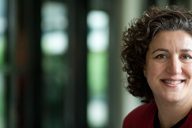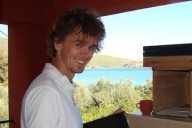 Dr. Renée van Kessel-Hagesteijn, one of the members of our Advisory Committee, is the director of Social and Behavioural Sciences at NWO, the Netherlands Organisation for Scientific Research. NWO is the largest Dutch financer of scientific innovation and active in numerous international networks and programs. In addition Dr. Renée van Kessel-Hagesteijn fills an impressive range of other functions and activities. Still, she also manages to find the time for an interview.
Dr. Renée van Kessel-Hagesteijn, one of the members of our Advisory Committee, is the director of Social and Behavioural Sciences at NWO, the Netherlands Organisation for Scientific Research. NWO is the largest Dutch financer of scientific innovation and active in numerous international networks and programs. In addition Dr. Renée van Kessel-Hagesteijn fills an impressive range of other functions and activities. Still, she also manages to find the time for an interview.
Talking to Dr. Renée van Kessel-Hagesteijn via Skype, we discover that she sees parallels between ARTISA and her own work and interests.
“ARTISA’s scope of bringing together and facilitating people who through their cooperation produce synergy, really appeals to me,” she underlines. “This also constitutes a central element in my work and I perceive this as my goal, yet in a different way. The leitmotiv in my professional life has been to unite different groups of scientists, as well as their users internationally. Furthermore, to facilitate that both groups stimulate and benefit from each other optimally.” These days, she is promoting these themes together with the 100 staff members she is managing. Funding plays a central role in this process. “We are asked to assume an entrepreneurial role,” she states. “We receive a core budget from the government and have to arrange money from other agencies. Central is that we provide an extra impulse to the solution of urgent societal issues. That is why we have to incorporate the social drive and interest, so characteristic of ARTISA, into all our programs.”
What about the mentioned ‘other way’? “We unite inspired researchers with business communities, ministries, and social institutions such as schools that have specific questions in need of a scientific response,” she explains. “For instance: the use of textbooks has become outdated in schools, so it has become necessary to explore in which manner children and adults optimally acquire course materials by means of new techniques such as visualizations. There, scientists examine whether the methods developed by ICT companies are acceptable before they are to be implemented in society.” As she emphasizes, this route from fundamental research towards application involves a wide range of steps that have to be taken carefully. “In the end, however, these are triple win situations in which numerous people and parties are working together. That is what gives me energy!”
Of course, this process can be complex because of the multitude of interests involved. “Companies are keen on launching new licensed products thus generating large profits. Are researchers willing to contribute to this? And, vice versa, are companies willing to invest such a huge amount of money with an uncertain research result? To manage this and to find the golden solution, that is a tremendous challenge!”
Not surprisingly, this is where creativity comes to the fore. As she explains: “We need to be creative in our interpersonal contacts. It takes a certain level of creativity to discover what motivates scientists to execute a specific research and, also, what encourages the spark in business people leading to the readiness of funding a project. Every time we succeed and all parties find each other in collaboration…yes, I get an enormous kick out of that.”
How do they get to that point? “We try to offer solutions for jargon differences, to narrow the enormous gap between different worlds. By bringing participants together and in another setting, by providing travel grants, organizing meetings and pilot projects, and creating an ambiance in which people trust each other and initiate new projects. Here, I also see a similarity with ARTISA. The fact that people are working together, often leads to surprisingly beautiful results and new insights.”












